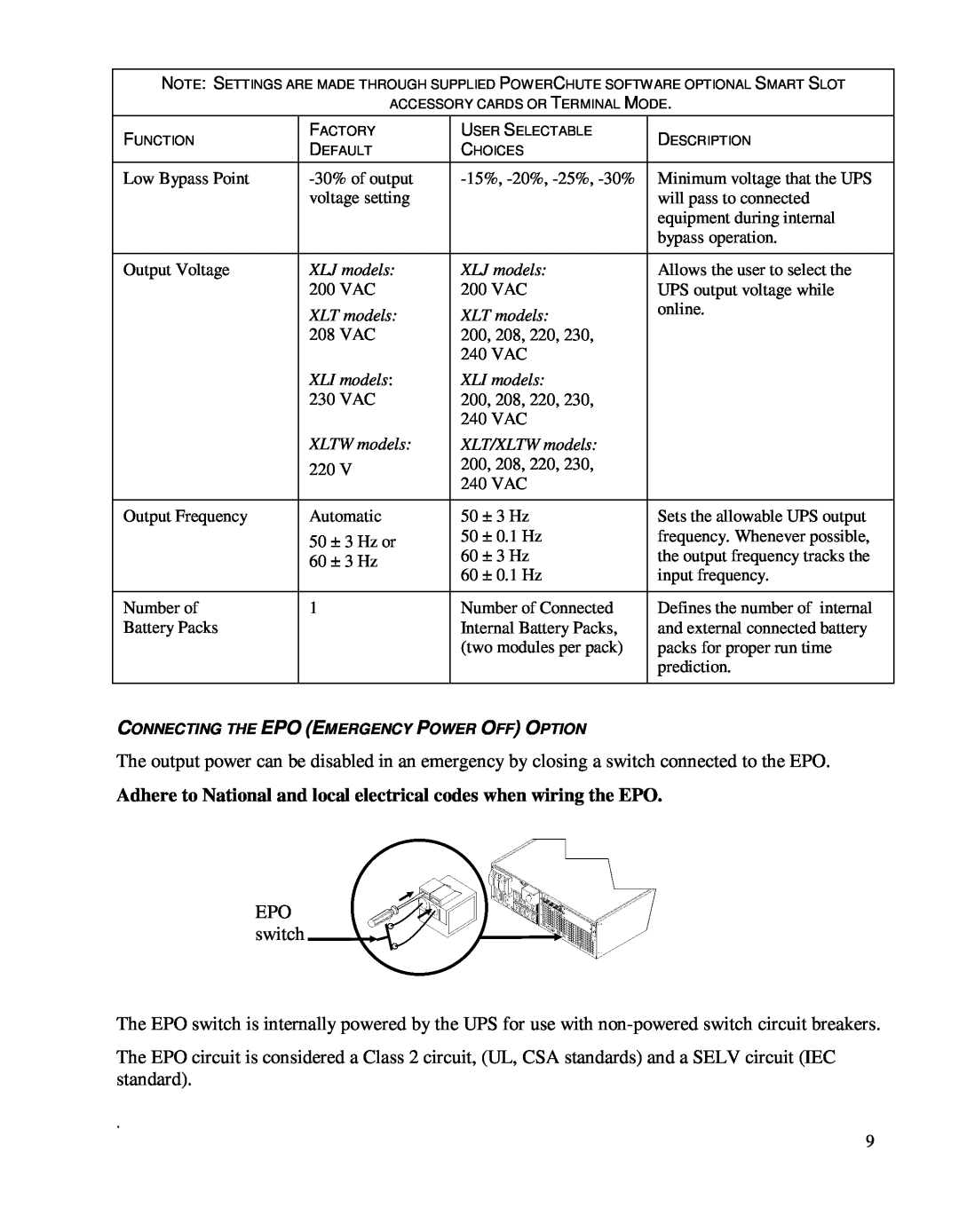
NOTE: SETTINGS ARE MADE THROUGH SUPPLIED POWERCHUTE SOFTWARE OPTIONAL SMART SLOT ACCESSORY CARDS OR TERMINAL MODE.
FUNCTION | FACTORY | USER SELECTABLE | DESCRIPTION | |
DEFAULT | CHOICES | |||
|
| |||
Low Bypass Point | Minimum voltage that the UPS | |||
| voltage setting |
| will pass to connected | |
|
|
| equipment during internal | |
|
|
| bypass operation. | |
|
|
|
| |
Output Voltage | XLJ models: | XLJ models: | Allows the user to select the | |
| 200 VAC | 200 VAC | UPS output voltage while | |
| XLT models: | XLT models: | online. | |
| 208 VAC | 200, 208, 220, 230, |
| |
|
| 240 VAC |
| |
| XLI models: | XLI models: |
| |
| 230 VAC | 200, 208, 220, 230, |
| |
|
| 240 VAC |
| |
| XLTW models: | XLT/XLTW models: |
| |
| 220 V | 200, 208, 220, 230, |
| |
|
| 240 VAC |
| |
Output Frequency | Automatic | 50 ± 3 Hz | Sets the allowable UPS output | |
| 50 ± 3 Hz or | 50 ± 0.1 Hz | frequency. Whenever possible, | |
| 60 ± 3 Hz | 60 ± 3 Hz | the output frequency tracks the | |
|
| 60 ± 0.1 Hz | input frequency. | |
Number of | 1 | Number of Connected | Defines the number of internal | |
Battery Packs |
| Internal Battery Packs, | and external connected battery | |
|
| (two modules per pack) | packs for proper run time | |
|
|
| prediction. | |
|
|
|
|
CONNECTING THE EPO (EMERGENCY POWER OFF) OPTION
The output power can be disabled in an emergency by closing a switch connected to the EPO.
Adhere to National and local electrical codes when wiring the EPO.
EPO switch ![]()
The EPO switch is internally powered by the UPS for use with
The EPO circuit is considered a Class 2 circuit, (UL, CSA standards) and a SELV circuit (IEC standard).
.
9
